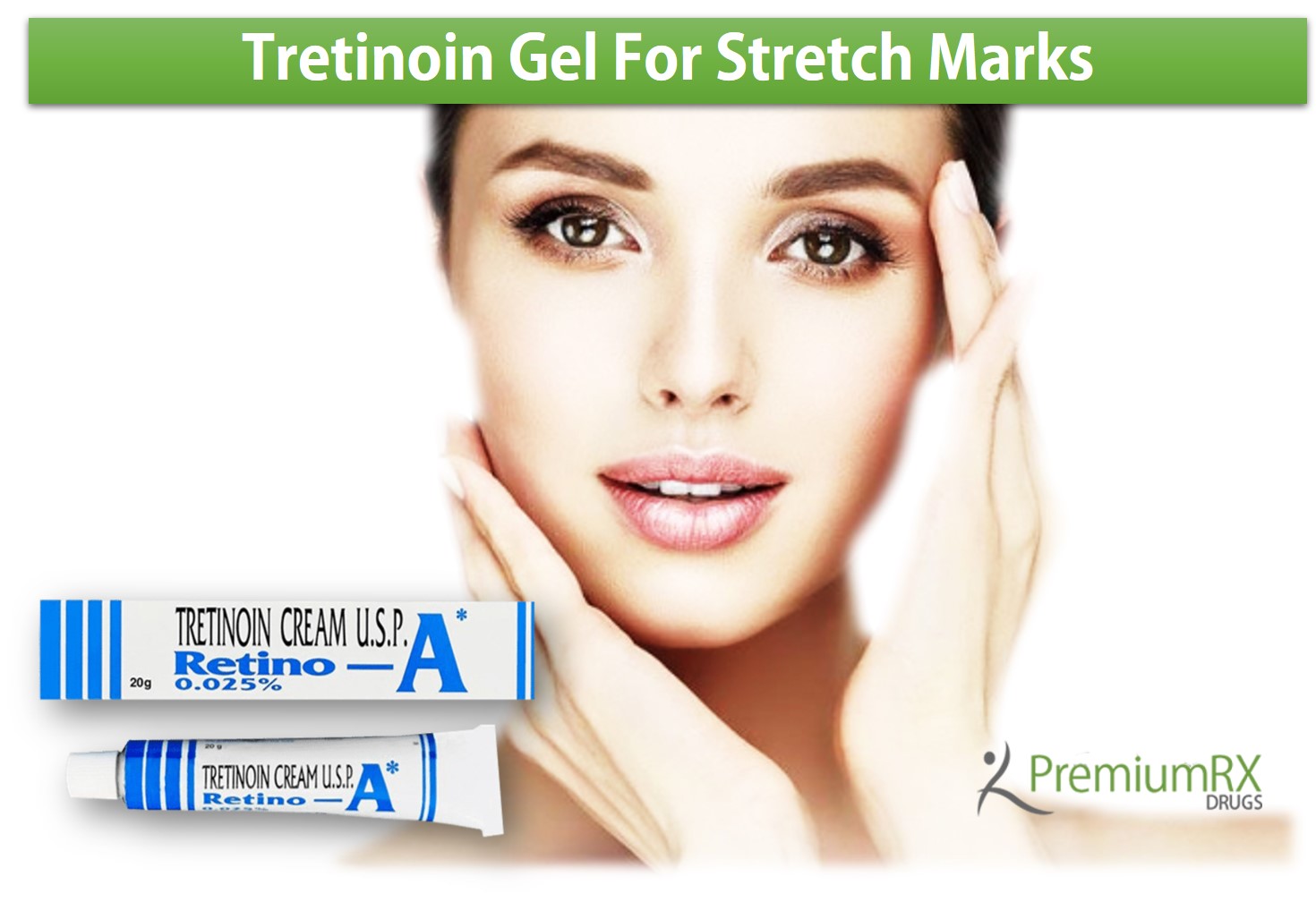Tretinoin gel can potentially reduce the appearance of stretch marks. The product has been shown to reduce fade and new stretch marks. Stretch marks are common; permanent dermal lesions develop during weight gain, pregnancy, or puberty. These lesions can be found on the abdomen, breasts, thighs, arms, hips, or buttocks. The skin is elastic, and rapid expansion of the skin can lead to the appearance of red and purple color stretch marks. Over time, they turn to white and silver marks; once they appear, it is hard to eliminate them. According to studies, around 90% of women get stretch marks during pregnancy. However, it can affect men and women of all ages and skin types. They typically appear during periods of growth when the body changes, such as muscle building, sudden weight gain, and puberty. Stretch marks can also result from steroid use and certain medical conditions. These marks are not painful but can harm an individual’s life by affecting one’s confidence and self-esteem. Unfortunately, no treatment has been shown to fade stretch marks fully. However, there are new therapies that are effective in reducing the size of marks.
One such solution is Tretinoin, a topical retinoid that has shown its efficacy in diminishing early stretch marks. Topical tretinoin is well-known for its well-known brand Retin A gel which comes with fewer risks of side effects. The topical agent has been available for many years for treating various skin conditions. It is commonly prescribed for treating acne vulgaris, but it may also be effective in reducing melasma, fine lines, sun spots, and hyperpigmentation. Regular topical tretinoin Gel application may also help treat one of the most difficult complaint marks. If reports from the clinical trial are believed, most treatments specially made to fade stretch marks do not work. Topical tretinoin, however, has been shown to provide maximum results when it comes to reducing the appearance of newly developing stretch marks when used regularly.
Use Tretinoin Safely
Tretinoin should not be used during pregnancy as it can potentially harm the fetus. Pregnancy is a frequent cause of stretch marks, so a lot of women find ways to reduce the appearance of those dermal lesions during pregnancy only. The medicinal cream may also pass through breast milk; however, there is not enough evidence to confirm this. While topical medication is proven safe and effective for fading stretch marks, some precautions are required for its results. Use it under the guidance of a dermatologist. Usually, a dermatologist will confirm a pregnancy test before prescribing Retin, a gel to reduce stretch marks.
Most women who use this medication for stretch marks or facial lesions do not experience any serious side effects. Adverse effects of topical tretinoin include dryness, irritation, and itching. Many users initially experience some dryness and itching as the medicine works and the skin adjusts.
Tretinoin can penetrate through the upper layer of the skin, where it increases collagen production, which helps the skin repair and heals stretch marks. It works to remove the dead skin cells from the skin’s surface, revealing the healthier skin underneath the epidermis. Being an exfoliator, tretinoin can cause dryness, resulting in redness that would disappear over time with continuous use. Use good quality sunscreen with an SPF of at least 30. It should be applied whenever you step out in the sun.
Tretinoin has been shown to improve stretch marks to some extent. Removing dead skin cells faster allows the formation of new skin cells with new collagen, reducing the appearance of stretch marks. With regular usage for two months, one can see a significant reduction in the severity of stretch marks. Order generic A Ret .025% Gel from premiumrxdrugs at an affordable price.
Marie
Latest posts by Marie (see all)
- Revize Micro Gel 0.025% | Uses, Price, Side effects - April 9, 2025
- What is Evalon Cream: How to Apply, Benefit, who Can Use - April 4, 2025
- Understanding Avanair 200 mg: A Comprehensive Guide - April 4, 2025




